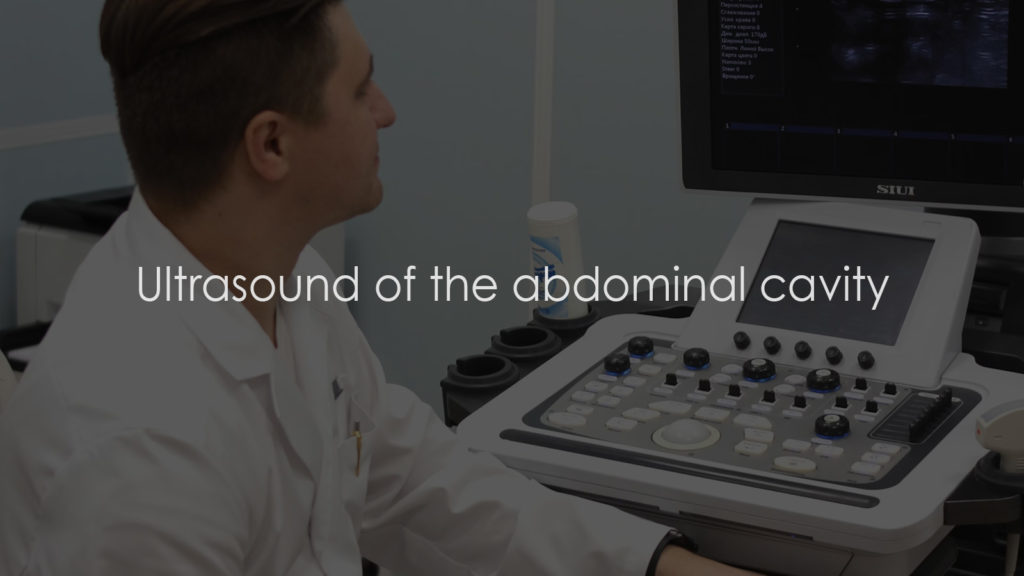An ultrasound of the abdominal cavity, also known as an abdominal ultrasound, is a non-invasive imaging test that uses high-frequency sound waves to produce images of the organs and structures within the abdomen. This diagnostic tool is widely used to evaluate the liver, gallbladder, pancreas, spleen, kidneys, and other abdominal organs. It is an essential procedure for diagnosing various medical conditions, monitoring treatment progress, and guiding interventional procedures. In this article, we will explore the purpose of an abdominal ultrasound, the procedure for conducting it, the interpretation of results, and important considerations when undergoing this test.

Why is it needed?
An abdominal ultrasound is necessary for several reasons, including:
- Diagnosing Medical Conditions: It helps identify conditions such as liver disease, gallstones, kidney stones, pancreatitis, abdominal aortic aneurysm, and tumors.
- Evaluating Symptoms: It is used to investigate symptoms such as abdominal pain, swelling, jaundice, and unexplained weight loss.
- Monitoring Chronic Conditions: Regular ultrasounds can monitor the progression of chronic conditions like liver cirrhosis or chronic kidney disease.
- Guiding Procedures: It aids in guiding needle biopsies, fluid drainage, and other minimally invasive procedures.
- Assessing Organ Function: It provides detailed information about the size, shape, and structure of abdominal organs, which can help assess their function and detect abnormalities.
Procedure for taking the test
The procedure for conducting an abdominal ultrasound involves several steps:
- Preparation: Patients are usually advised to fast for 8-12 hours before the test to reduce the amount of gas in the intestines, which can interfere with the images. Drinking water is often allowed, but other beverages and foods should be avoided.
- Positioning: The patient lies on an examination table, usually on their back, but sometimes on their side or stomach, depending on the area being examined.
- Application of Gel: A clear, water-based gel is applied to the skin over the abdomen to help the transducer make secure contact and eliminate air pockets that can interfere with sound wave transmission.
- Scanning: The ultrasound technician, also known as a sonographer, moves the transducer over the abdomen. The transducer emits sound waves and captures the echoes that bounce back from the internal organs. These echoes are converted into real-time images on a monitor.
- Duration: The entire procedure typically takes about 30 minutes, but it may vary depending on the specific area being examined and the patient’s condition.
- Completion: After the scan, the gel is wiped off, and the patient can usually resume normal activities immediately.
Interpretation of results
Interpreting the results of an abdominal ultrasound involves examining the images for abnormalities in the size, shape, structure, and function of the abdominal organs. Here are some key findings and their potential implications:
Liver
- Normal: Smooth, uniform texture and size.
- Abnormal: Enlarged liver (hepatomegaly), fatty liver, cirrhosis, liver tumors, cysts, or abscesses.
Gallbladder
- Normal: Thin-walled, free of stones.
- Abnormal: Gallstones, inflammation (cholecystitis), polyps, or tumors.
Pancreas
- Normal: Homogeneous texture without masses.
- Abnormal: Pancreatitis, pancreatic cysts, tumors, or ductal dilation.
Spleen
- Normal: Homogeneous texture and normal size.
- Abnormal: Splenomegaly (enlarged spleen), cysts, tumors, or infarcts.
Kidneys
- Normal: Smooth contour, no stones or masses.
- Abnormal: Kidney stones, cysts, tumors, hydronephrosis (swelling due to urine buildup), or abscesses.
Abdominal Aorta
- Normal: Uniform diameter, smooth walls.
- Abnormal: Abdominal aortic aneurysm (AAA), atherosclerosis (plaque buildup), or dissections.
Other Structures
- Bladder: Full bladder with smooth walls, no masses or stones.
- Intestines: Bowel loops should not obstruct the view of other organs; abnormal findings may include masses, obstructions, or fluid collections.
Important Considerations
When undergoing an abdominal ultrasound, several factors should be taken into account:
- Preparation: Proper fasting is crucial for optimal imaging. Follow the specific instructions provided by your healthcare provider.
- Discomfort: The procedure is generally painless, but some patients may experience slight discomfort due to the pressure of the transducer.
- Limitations: Ultrasound may not be as effective for imaging structures filled with air (like the intestines) or for obese patients, as excessive fat tissue can interfere with the sound waves.
- Follow-Up: Abnormal findings may require additional testing, such as CT scans, MRI, or blood tests, for further evaluation and confirmation.
Conclusion
An abdominal ultrasound is a vital diagnostic tool that provides valuable information about the health and function of abdominal organs. It is non-invasive, safe, and widely accessible, making it an essential procedure in modern medicine. Understanding the purpose of the test, the procedure involved, and the interpretation of results can help patients better prepare for the examination and understand the findings. Regular abdominal ultrasounds, particularly for individuals with chronic conditions or symptoms, can significantly aid in early diagnosis and effective management of various health issues.